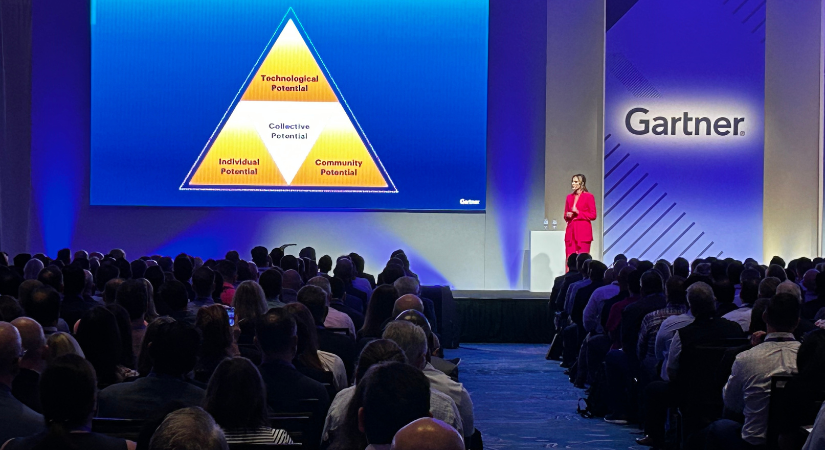Low labor productivity levels hinder supply chain goals, Gartner says
High turnover rates linger in the sector compared to pre-pandemic levels

Historically low labor productivity levels are threatening the business agendas of chief supply chain officers (CSCOs), a Gartner analyst said today in the keynote address at the Gartner Supply Chain Symposium/Xpo.
“Labor productivity levels are historically low and stalled out, in large part due to lack of investment in workforce innovations. One clear symptom is that turnover is 33% higher in supply chain organizations compared to pre-pandemic levels,” Caroline Chumakov, director analyst in Gartner’s Supply Chain Practice, said in a release. “While that may paint a discouraging picture, it also provides an excellent basis for supply chain leaders to experiment and rethink how they unlock, mobilize and augment the workforce to greater productivity.”
The assessment came just days after the federal government released its April jobs report, showing that the unemployment rate had declined to 3.4%, its lowest level in 54 years. That measure showed that the nation’s labor market remains quite tight, as the U.S. economy added 253,000 payroll jobs in April, despite the Federal Reserve’s efforts to slow the economy through higher interest rates, transportation analysis firm FTR said.
According to Gartner, solutions to the challenge could hinge on three initiatives: unlocking individual potential, community potential, and technological potential in support of workforce enablement. The firm defines each term as follows:
• Individual potential – High-demand skills are often already available in supply chain organizations but are too often trapped by the confining nature of the job description. CSCOs can unlock more skills and flexibility by breaking down projects into component tasks and seeking skills needed for those tasks across the entire organization and even beyond it. This can be applied to challenging positions requiring multiple skills.
• Community potential – Organizations can leverage crisis situations and market opportunities as a reason to breakdown silos and find new, more efficient organizational structures. These spontaneous reorganizations happened at many companies during the initial disruptions of the COVID era and can be productively harnessed to build resiliency in the face of new challenges, such as persistent inflation or a potential economic downturn.
• Technological potential – New technology solutions, such as actionable AI and smart robotics, can make work easier and less mundane for employees, but employee mistrust of these technologies threaten to stymie the full set of benefits on offer. All new ways of working should be designed with the human-technology relationship in mind. Organizations should also prioritize reciprocal learning – the opportunity for employees to safely make sense of new technology, and technology can learn from human input.
Related Articles
Copyright ©2024. All Rights ReservedDesign, CMS, Hosting & Web Development :: ePublishing